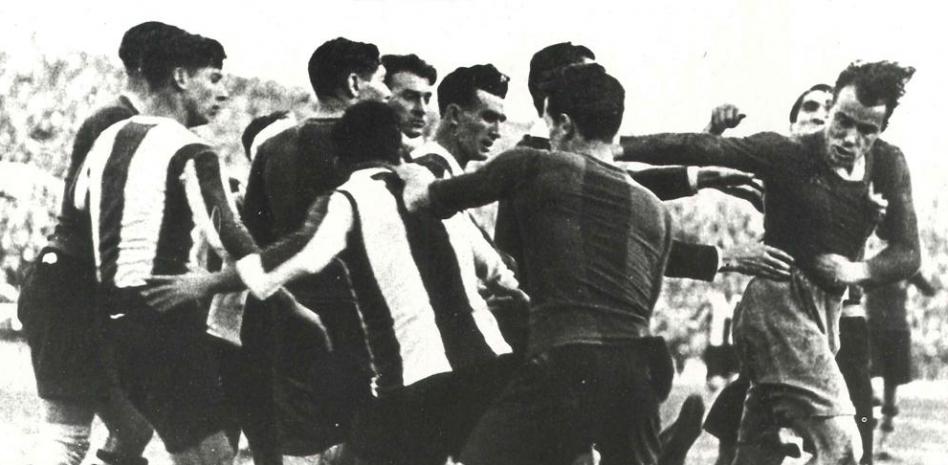It is sometimes said, with quite convincing arguments, that in football everything has already been invented. In the sphere of FC Barcelona’s most radical supporters’ clubs or groups, these seem to have emerged in the late eighties or early nineties, but in reality they go back much further. The reason: the sporting and political rivalry with RCD Espanyol.
In the early 1920s, FC Barcelona had a Greco-Roman wrestling section led by the great champion Emili Ardèvol, who sympathised with certain Catalanist political tendencies. Taking his name, a FC Barcelona penya was created, the Penya Ardèvol, which was characterised by its animosity towards the other important team in the Catalan capital, RCD Espanyol. It was a rivalry forged by differences on a sporting, political and institutional level. So much so that, after the inauguration of the Camp de Les Corts on 20 May 1922, Joan Gamper boasted all over Barcelona about his brand-new stadium, joking and making fun of his great city rival.
Espanyol’s president was Genaro de la Riva, a club man who just that year had managed to steal the legendary goalkeeper Ricardo Zamora from Barça. Now Gamper was slapping him back in the face with that new stadium. De la Riva did not take kindly to Gamper’s mockery and, out of his own pocket, bought the land at Can Rabia, where a year later he would inaugurate the legendary Sarrià stadium.
The beginning of a rivalry that has lasted more than 110 years
It is not surprising, then, that every derby almost became an act of war at all levels. In fact, the first clashes came as early as the 1910s, when complaints between the two teams were constant. In 1911, Gamper expelled a group of FC Barcelona players who, in return, signed for Espanyol and strengthened the team enormously, a fact that made the duels personal. Subsequently, the famous Garchitorena case broke out, in which Espanyol denounced FC Barcelona for improper alignment of the Filipino player Juan Garchitorena after losing a play-off in the Catalan Championship.
At a time when society was politicised by the struggle for autonomy, trade unionism and “pistolerismo”, both teams were marked forever. Barça was the pro-Catalan club and Espanyol the pro-Spain club, following the tendency defended at the time by the De la Riva family.
The “small change derby”
Another episode was that of 23 November 1924, when the famous “small change derby” took place, remembered for the fights and the rain of coins that forced the match to be replayed without an audience. These fights were led, in part, by members of the aforementioned Penya Ardèvol and the Peña Ibérica del Espanyol. The latter was made up of players from the club’s rugby section and issued political publications in which they defined themselves as “a markedly pro-Spain Catalan youth”. Among its members were José María Poblador, a future member of the Falange, and Josep Clapés, the future mayor of Terrassa under Franco dictatorship.
It is not surprising, then, the significance of those derbies and the enormous tension that would be experienced on the pitch, in the offices and in the stands. A rivalry that has reached our days after more than 110 years. It would have been very interesting to preserve images of some of the brawls between “Greco-Roman” and rugby players.






